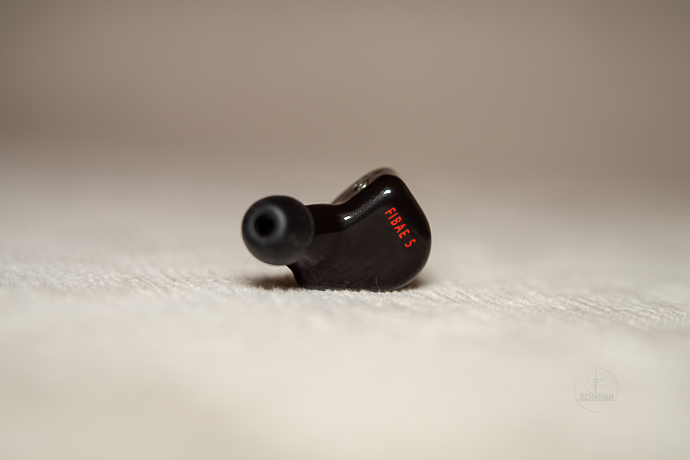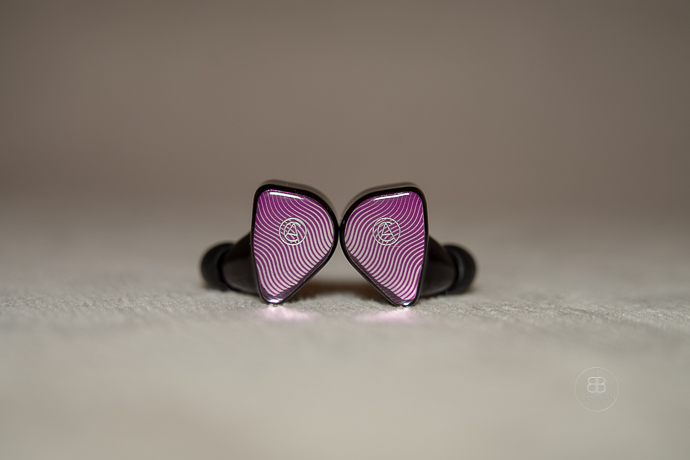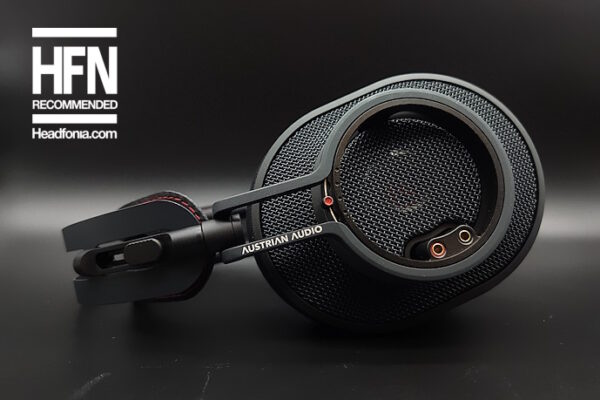Good Imaging & Staging
Despite this full and meaty presentation, the FIBAE 5 still has very good sound-stage dimensions. Normally with this much bass and fullness, you get a very intimate and congested sound, but the F5 manages to present a wide and deep stage.
Other than that, the imaging department is strong too. Sure, it’s not as sharp as other more neutral-sounding monitors, since it has a very different tuning altogether. Yet, the stereo imaging is still quite good, and there’s good layering with good enough precision and detail.
It’s neither the widest-sounding nor the most technical IEM on the market, but it does a good job in those areas and manages to merge them with its own fun-oriented, warm tuning. Detail retrieval for example, in an IEM like this, is simply impressive.
The mid-range is not too laid-back as well. This helps to have good coherency across the spectrum. So the FIBAE 5 is not that extreme at all in terms of its specific fun tuning. Sure, the bass is strong and the treble is bright, but it’s not done in a very aggressive way. So while keeping this enjoyable modern presentation, you still get what you need in terms of cohesiveness, imaging and soundstage with a realistic delivery.

Great Bass & Treble
The special thing about the FIBAE 5 is its treble presentation above anything else in my book. These planar drivers manage to give an effortless, well-defined and well-extended treble which is very articulating and smooth. It doesn’t have the rather aggressive treble of the FIBAE 7U. I imagine Custom Art will continue to use these drivers in the future since they present an excellent treble.
Bass has great body and impact and sub-bass is present when called upon. It’s borderline a bass-head IEM. This can be changed with the filters and tips (explained below), but the FIBAE 5’s bass is impactful and definitive.
The bass is tight, although the 7U has a tighter bass with more quickness. The FIBAE 5 however has great impact and definition, with great punch and rumble. Bass certainly isn’t what we call neutral or reference, it’s much fuller, musical and foot-tapping. Bass goes down quite well. The sub-bass presentation depends a bit on the source you’re using it with but it is very much there.
The mids have a nice sense of body and space together, but I think the lower mids sound a bit recessed. The upper mid-range is a bit more apparent. The F5 is not a mid-centric IEM as a result, but it has very good tonality and timbre there. Transparency in the mid-range is not the best around though.

Tips & Filters
The FIBAE 5 is quite a tuneable IEM and it can be tuned in two different ways. The tips play an important role here. It’s quite tip-sensitive, and I don’t think the stock tips give the required quality, both in terms of fit and sound. I think the best synergy is with the Final Audio tips, which are usually my favourite. That configuration makes the IEM more cohesive with better balance. The bass is better controlled, and the treble is a bit smoother. You can try some tips with larger diameters, and that reduces the bass and boosts the treble.
Another way of tweaking the sound is the included acoustic filters. Custom Art explains how to attach them with the included QR code in the package. With the filters installed, the bass is reduced to get a more balanced and natural sound, and I quite liked it that way.
Sources
With the FIBAE technology, the type of source used only has a limited impact on the monitor’s sound signature. You can still notice and listen to the impact different sources have on the sound, but the signature stays unchanged. What the FIBAE 5 will do however is make you hear everything the source is sending to it. So the better the source, the stronger the F5 performs regarding detail, extension and dynamism.
Yet, I recommend reference and rather analytical sources, preferably the ones using ESS chips. The bass of the F5 is tricky, and I experienced the best presentation with DAPs using ESS DACs. So yes, FIBAE tech makes the IEM less sensitive to source matching, but you still need to match it with a proper and complementary source to get the best out of it.







